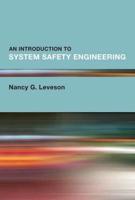Publisher's Synopsis
Excerpt from Fire Control Notes, Vol. 17: A Periodical Devoted to the Technique of Forest Fire Control; October 1956
The comparative fire hazard of areas of burned and unburned slash was investigated by Munger and Matthews and they concluded that unburned slash in western Washington and Ore gon is one-third more hazardous than burned slash 10 years after logging. Cheyney on the other hand, writes in the Journal of Forestry: It would be a conservative statement to say that no slash is a special fire hazard in the Lake States for more than 5 years after it is cut. There appears to be no doubt, however, that an accumulation of slash in a cut-over forest will increase the fire hazard of the area for a considerable period after cutting operations have been completed. Further, it is evident that in any locality the increase of hazard brought about by the pres ence of slash will vary somewhat with the method of slash treat ment employed, and with the number of years which have elapsed since cutting took place.
The Federal Forestry Branch, in co-operation with the Mani toba Forest Service, conducted a series of large-scale test fires in slash areas in the Sandilands Forest Reserve. The object of the study was to determine experimentally, (a) the comparative fire hazard in jack pine in similar cut-over areas where different slash treatments had been employed and, (b) the variations in hazard which occur as slash ages. The term slash age will be used to refer to the number of years since logging.
About the Publisher
Forgotten Books publishes hundreds of thousands of rare and classic books. Find more at www.forgottenbooks.com
This book is a reproduction of an important historical work. Forgotten Books uses state-of-the-art technology to digitally reconstruct the work, preserving the original format whilst repairing imperfections present in the aged copy. In rare cases, an imperfection in the original, such as a blemish or missing page, may be replicated in our edition. We do, however, repair the vast majority of imperfections successfully; any imperfections that remain are intentionally left to preserve the state of such historical works.










